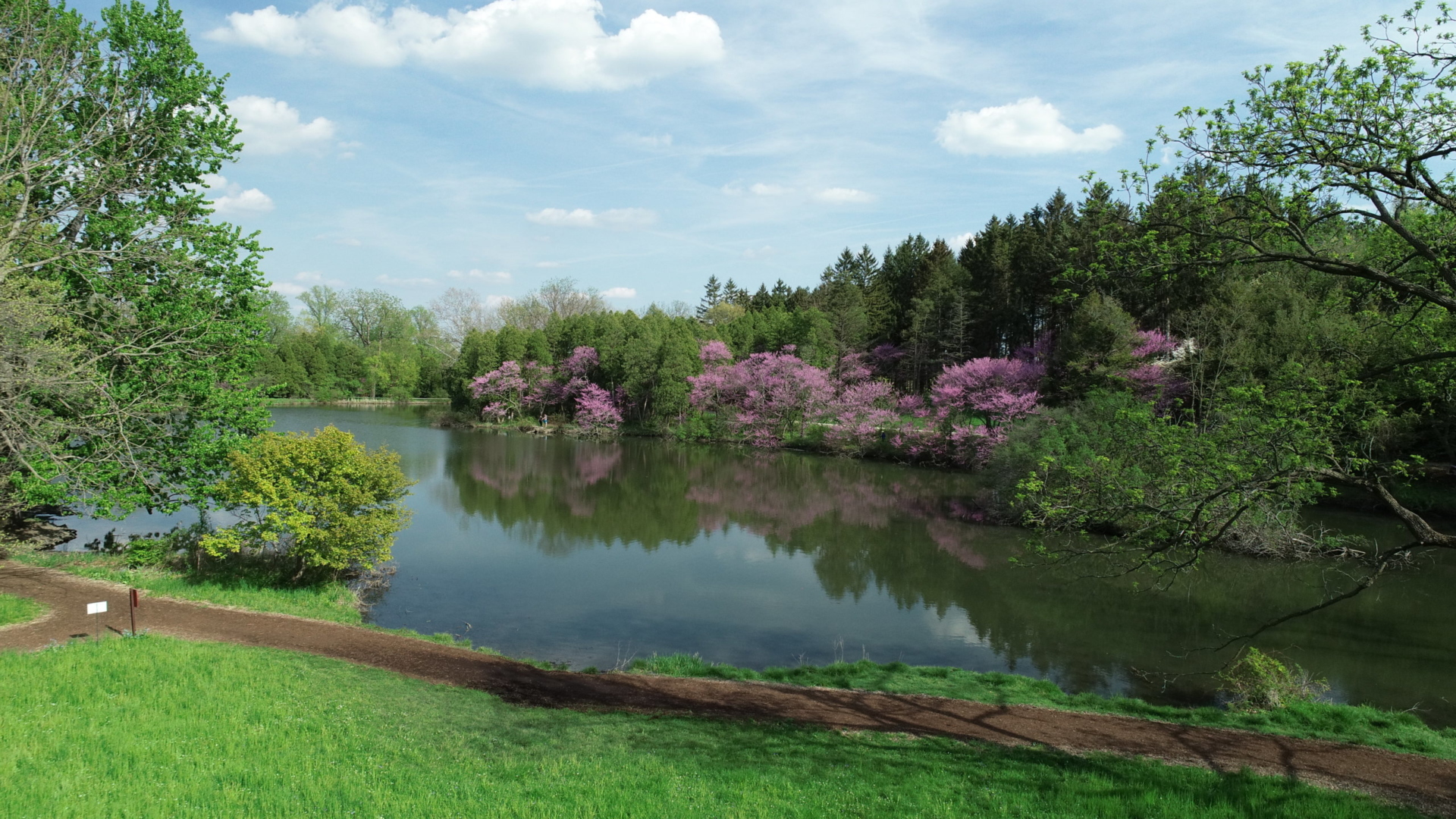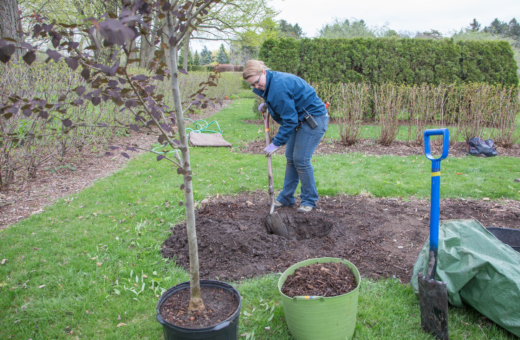Take a Historic Walk on the Arboretum’s West Side
While touring by automobile in 1909, Joy Morton, his friend E.A. Potter, and their chauffeur jumped from their car to stamp out a grass fire and stumbled upon the spot that captured Joy’s vision for a home, and ultimately his legacy.
The original 175 acres of The Morton Arboretum lie at the top of the DuPage River Valley on the Arboretum’s West side. By the time Joy died in 1934, the Arboretum included 735 acres. Several West side landmarks, created in the first years of his fledgling “museum of trees,” still exist in much their same form, waiting to delight and inspire today’s guests of all ages.
Joy Path
Joy Path, which begins between the Thornhill Education Center and the Fragrance Garden, is a popular starting spot for short hikes or all-day adventures. Mr. Morton wrote that every evening after work, still wearing his suit and hat, he would walk the path to connect with the sights and sounds of country life. In 1924, he wrote in a letter, “We have made quite extensive plans for the Arboretum … We are going to have fine specimen trees and shrubs all along the path; shall make a particular effort to grow the broad-leafed maples along the path, which is well protected on all sides and I think will ultimately become one of the prettiest parts of the Arboretum.”
Each year as many as 10,000 children may travel the path as part of a field trip, camp program, or early childhood program that advances their understanding of natural science in a hands-on setting. Look for the beautiful spreading canopy of the Miyabe “State Street” maple at the south end of Joy Path, and ponder the number of guests who have enjoyed its shade since it was planted in 1929.
Lake Marmo
In early September 1922, a crew including renowned naturalistic landscape designer O.C. Simonds began work in the area known as Round Lake Meadow. Digging with teams of mules and dredges, crews gradually widened and deepened the small tributary of the DuPage River, creating Lake Marmo, named for Joy’s second wife, Margaret Morton. In 1925, Simonds said that an arboretum should be more than a museum of trees and shrubs. He wrote, “It should be a work of art … In short, it should be a beautiful place, affecting one like a beautiful painting.”
From any side of the lake, guests can enjoy the contrast of sky and trees, the reflection of redbud blossoms in spring, or fall color in the water. When visiting Lake Marmo, one cannot help but feel they’re in a painting.
Daffodil Glade
Joy’s early plans for the Arboretum included Sargents Glade on the West side of the Thornhill ravine, but most guests today know this beautiful area by a different name, Daffodil Glade. Beneath widely spaced old oaks, spring rolls out a grassy carpet filled with waves of cheerful, varied daffodils. Daffodils are hardy, tough, and unattractive to animals, which is why they are sometimes planted near tree roots, to protect them. Some species also depend on the partial shade and moist soil that a tall tree allows. The first daffodils here were planted in 1946.
Even without its spring finery, this grove of oaks is a lovely spot to linger. As a keystone species, oaks provide habitat for hundreds of living organisms including mammals, birds, insects, and other plants. Oaks are known to be strong, durable, and long-lived trees. The white oak is the state tree of Illinois, and if you take a close look at The Morton Arboretum’s logo, you will see a white oak, with acorns at its base.
Come explore the beauty of the Arboretum’s West Side, or join one of the guided hikes offered year-round through the Arboretum’s education programs to learn more from our expert guides.



